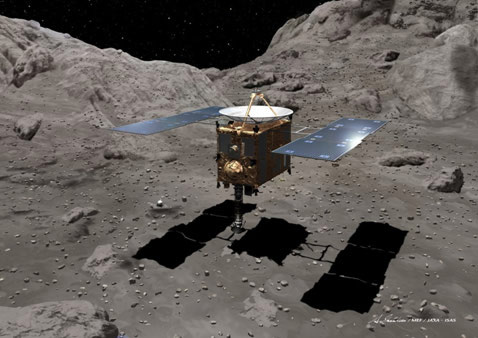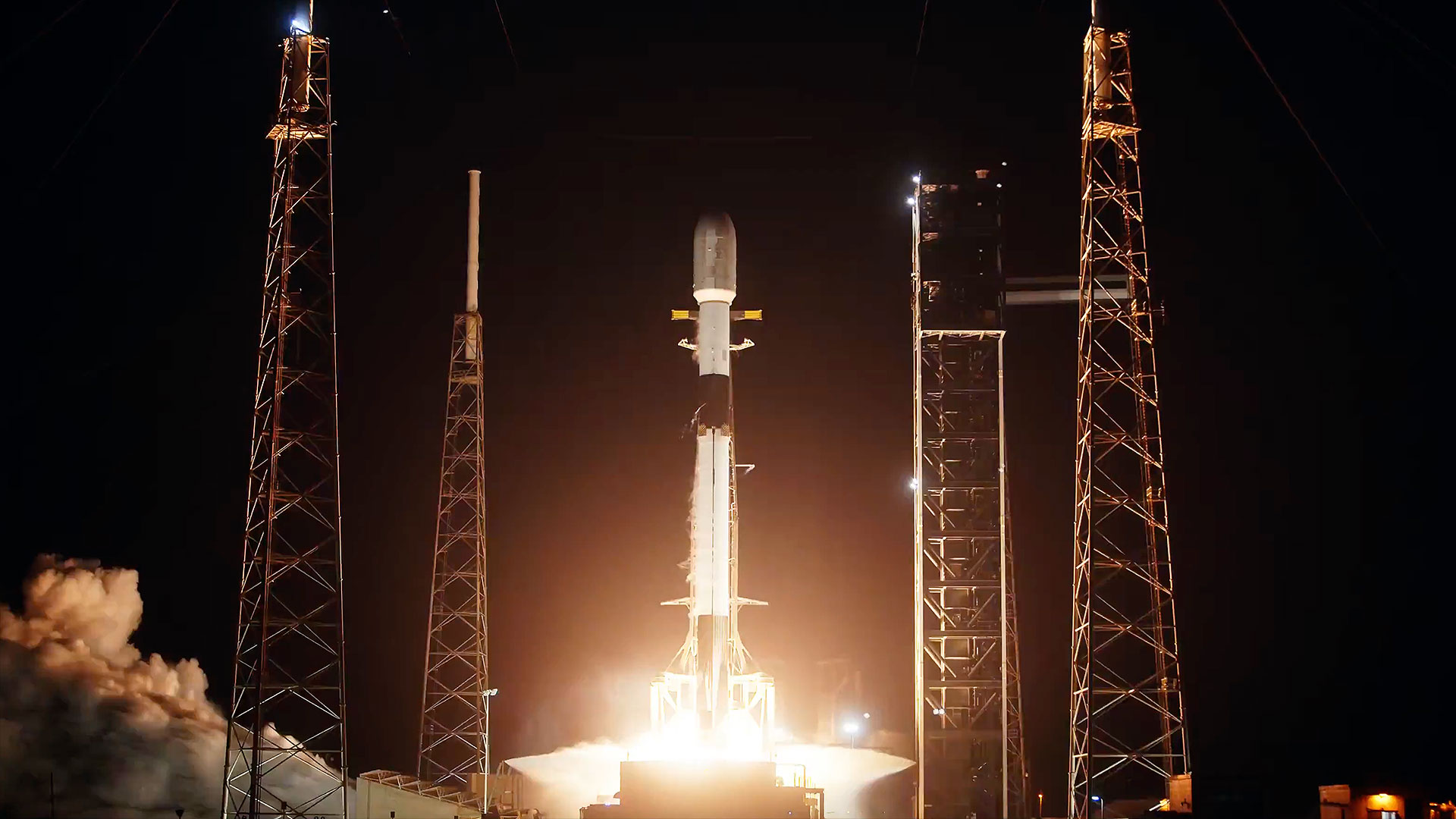Asteroid Probe Tweaks Path Back to Earth

A Japanese asteroid probe is a step closer to coming home ?possibly with a piece of space rock on board ? after firing its thrusters tostay on course for a planned June 13 landing.
The probe, called Hayabusa, launched by the Japan AerospaceExploration Agency (JAXA) in May 2003, is returning from the nearby asteroid25143 Itokawa, where it landed and tried to collect samples. The beleagueredprobe reached the asteroid in 2005, but has suffered several malfunctionsduring flight that have extended its mission nearly three years longer thanplanned.
Mission scientists aren't even sure if Hayabusa managed tocollect samples on Itokawa (its projectile device designed to kick up dustfailed to fire properly) but they still hope the probe managed to snag at leastsome asteroiddust and pebbles inside a collection canister.
The 950-pound (430-kg) spacecraft's sample return capsule isscheduled to land back on Earth June 13 at the WoomeraTest Range in the desert of South Australia.
In the recent maneuver (called a TCM-3 operation), JAXA wasable to shift the probe's path from Earth's outer rim toward its intended landingsite in Australia. The spacecraft is currently about 3.6 million kilometers(2.2 million miles) away from Earth.
The move went successfully, which was a nice break for the spacecraftafter the long string of engineering difficulties it has suffered since leavingits asteroid target. Those glitches include engine problems, a leakingthruster, broken reaction wheels, and a loss of communication with the ground. Allseems to be on track now for landing, though.
"Hayabusa system is going well," JAXA said in astatement.
Breaking space news, the latest updates on rocket launches, skywatching events and more!
One more trajectory correction maneuver is scheduled forlater this week to further refine Hayabusa's Earthward approach.
Hayabusa, which means "Falcon" in Japanese, tookextensive observations on and around the Itokawaasteroid, where it lingered for about three months during the originalscience mission. That information, and the possible samples it might becarrying, should help scientists understand how asteroids formed and the rolethey played in the history of our solar system.
- Images ? Asteroids Up Close
- Gallery - Stardust Probe Returns Comet Pieces to Earth
- Pale Blue Crescent: Earth Photographed From Deep Space

Clara Moskowitz is a science and space writer who joined the Space.com team in 2008 and served as Assistant Managing Editor from 2011 to 2013. Clara has a bachelor's degree in astronomy and physics from Wesleyan University, and a graduate certificate in science writing from the University of California, Santa Cruz. She covers everything from astronomy to human spaceflight and once aced a NASTAR suborbital spaceflight training program for space missions. Clara is currently Associate Editor of Scientific American. To see her latest project is, follow Clara on Twitter.
